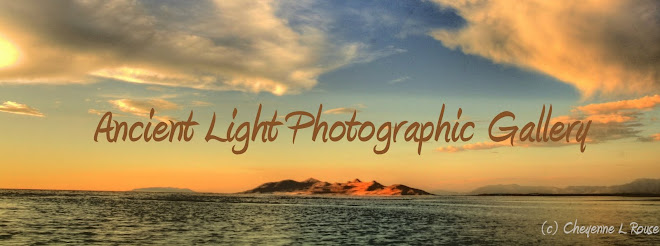 The Art of Photo Composition
The Art of Photo CompositionI am going to start this column by putting you on the spot and asking you, as one photographer to another, a very important question. When creating an image do you ask yourself what you would like to say with this particular image? Because we know that every picture is worth a thousand words…we want to make sure that those ‘thousand words’ are going to be a really dynamic ‘thousand words’.
What I am trying to say here is composition is key to making a statement with your photos. In my opinion, the difference between a snapshot and a photograph is the thought that went into composing the image. In most cases, before I head out to shoot I have a preconceived visual image in my head of what I would like to return with, sometimes down to very small details. Certainly I leave room for spontaneity, which can result in very nice images as well.
I am sure that you page through many magazines looking at other photographer’s work and certain images stop you in your tracks. What is it about that image that attracted you? Could it be an eye pleasing composition? Could it be how simple the shot is? Could it be the warm light? Maybe the image conveys a mood or moment in time that you can relate to. The fact is the image communicates something to you. That is what photography is all about…communication. Now see how important those ‘thousand words’ are?
Next time you are shooting a photo give yourself an assignment to just work on your composition. When your camera is all set up on your tripod (it better be!) look through your viewfinder and scan the entire frame. Believe it or not most people just glance through the viewfinder then wonder why a telephone pole is sticking out of the top of Fred’s head. They did not take the time to scan the viewfinder to see if there were any distracting details that could have been eliminated.
A common problem is trying to say too much with your photo. If there is too much going on in the photo it becomes a confusing and misunderstood photograph. Have ever had to explain a photo to someone? If you did then that photo had poor composition. A photo with good composition speaks for itself and draws your eye into it effortlessly. Keeping color to a minimum is a good starting point, try not to have too many colors in the image opposing and complimentary colors are nice. For instance if you are in the desert shooting a red rock scenic make sure you get some real blue sky in there to make that red rock stand out even further or a wildflower in bloom against the brilliant red rock.
Your lens choice will also effect your composition, try different lens for your shot; it is amazing how different focal lengths can change your composition. For that red rock landscape shot try a real wide angle (20mm) lens and then try a telephoto lens (200mm) and see which one you like better. There is no right or wrong only whether you like the final result or not.
The beauty of photography is that is has no rules (we like that) only guidelines. OK, there is one rule but that we will call it a guideline, the rule of thirds. This is when you visually divide your viewfinder into a grid of thirds or nine squares. This ‘rule’ has been used by painters and photographers for centuries and helps make for a balanced picture. The trick is to keep any subjects out of the center square; your photo will have much more impact if you keep your subject off to sides or at the intersections of these nine boxes. Placement of your subject too near to the edges of the frame can be very distracting and even confusing to the viewer. We want our images to have visual impact and interest don’t we?
When shooting action, whether it is hiking, running, skiing make sure that the subject is traveling ‘into’ the frame and not out of the frame. Or if the subject is standing still in the frame make sure they are looking into the frame and not out of the frame it helps lead the viewers’ eye into the image and not away from it.
Remember to take your time when ‘creating’ photographs; slow down, observe and analyze. Keep things simple. Look before you shoot. Here is a composition checklist to keep in mind next time you head out:
• Select your subject or theme
• Best camera position?
• Which lens should I use?
• What aperture and shutter speed?
• Vertical or horizontal?
• Subject position?
• Scan frame for distractions
• Now…wait for that decisive moment and shoot.
I know that I am always harping on you to experiment and enjoy the process…but I mean it! Don’t be afraid to shoot a lot of film – pixels (whatever you shoot) if a particular subject really attracts you. Don’t be timid with that camera, get out there and go for it! I hope these ideas and tips help you out. Please visit my online Photo Gallery on Etsy to view more of my work – www.PlanetChey.Etsy.com or my Stock Photography website – www.CheyenneRouse.com
Happy shooting!





No comments:
Post a Comment